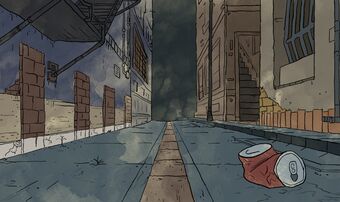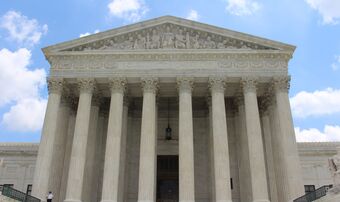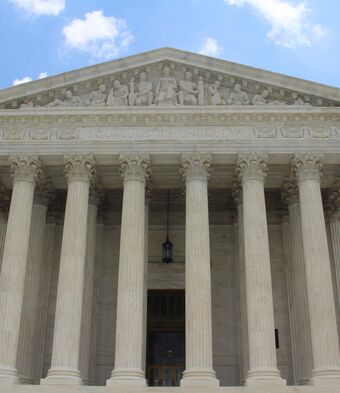“We want to stamp out the back-street abortions, but it is not the intention of the Promoters of the Bill to leave a wide-open door for abortion on request….We have to avoid in the Bill wording which is so restrictive as not to have the effect which we are seeking – namely, the ending of the back-street abortions.” David Steel, during the debate on the Abortion Act 1967
When abortion is debated in our current political context, one of the primary arguments adopted by its advocates is that it is an essential means by which women retain autonomy over their bodies.
Putting aside discussion of the relative merits of this claim, it’s notable that the idea of bodily autonomy was not a common line of argument adopted when abortion was first legalised in Britain in 1967. Instead, abortion campaigners were primarily successful because they tapped into public fears (and therefore politicians’ concerns) that women were dying from backstreet abortions. This article seeks to interrogate the argument that backstreet abortions are a justification for legalised abortion.
This is a far more powerful defence of abortion than the concept of bodily autonomy, which is easier to dispute scientifically and philosophically. It sits neatly in the middle of the abortion debate, providing even those who possess moral discomfort with the termination of foetal life an adequate reason to believe legal abortion continues to be necessary. Indeed, such a perspective, with its appeal to compassion and practicality, is undoubtedly appealing to many Christians.
A continuing concern
It’s crucial that we understand the historical context that has informed and shaped the way we talk about abortion today. Despite being legal for the past 50 years, there persists a sense of fear and unease that any change to the law on abortion will lead to a return to women dying from backstreet methods. Such language is adopted in proactive parliamentary attempts to liberalise the law, and often featured in parliamentary debates on abortion law in Northern Ireland.
Similarly, the term ‘preventing unsafe abortion’ is commonplace jargon in international development, one of the key aims of the ‘reproductive rights’ arm of the WHO, and a considerable amount of UK taxpayer money is sent to support organisations providing abortions in developing nations on this basis. Arguments about backstreet abortions are, therefore, entirely relevant to the debate today.
The rise of backstreet abortions in the 20th Century
At the outset, it is important to note that abortion was actually not illegal in the 1960s. It was legal if it was carried out in order to save the mother’s life under the Infant Life Preservation Act 1929. Following the court case of R v Bourne, it was also permitted if it prevented the mother from becoming a ‘physical and mental wreck’. In this case, Alec Bourne, a doctor, performed an abortion on a 14-year-old girl, pregnant as a result of rape. He was acquitted, as the judge held that an abortion could be performed if the pregnancy was capable of rendering the woman a physical or mental wreck, so as to pose a significant risk to her life. This was a noteworthy case that paved the way for abortion on mental health grounds – the most common ground for abortion since 1967.
Backstreet abortions were occurring before the ’67 Act, even though it was legal in these circumstances. This was partly for economic reasons: abortions were only available privately. For women in lower-income households there is evidence that they used a number of different means to procure their own abortion, all of which were potentially dangerous or fatal. This resulted in women suffering from a number of severe consequences including sepsis, haemorrhage and – in the worst scenarios – death.
The primary intention of the Abortion Act 1967 was seemingly clear: reform the law so that women are able to obtain abortions under certain grounds, rendering backstreet abortion obsolete.
As medical law professor Sally Sheldon notes, the Act introduces important limitations on abortion services, such as making doctors gatekeepers, setting out notification requirements, and restricting the locations where abortions can take place. “Through such limitations”, she argues, “the UK parliament of the late 1960s aimed to address the problem of backstreet abortions, ensuring that henceforth terminations would be performed openly by an appropriately skilled doctor, in approved premises, following a second opinion.”[1] The law as it exists today therefore appears to be designed specifically to address the problem of backstreet abortions.
How many backstreet abortions were occurring?
One might ask why it is necessary to determine the exact numbers of women suffering harm from illegal abortion: surely evidence that any woman was being harmed before the ’67 Act ought to be sufficient justification for legal reform?
In public policy terms, however, it is important that any changes to the law are based on robust evidence, and that a balancing act is carried out to ensure that the law protects the majority of people in society. This will necessarily mean that certain individuals may suffer harm or have their autonomy limited as a result. This consideration underpins every aspect of public policy and is an aspect of law making that has perhaps been lost in the individualistic landscape that defines modern culture. As public discourse becomes increasingly therapeutic, individual experiences come to the fore and overarching policy objectives designed to do justice to the majority are lost in a sea of media-fuelled disgust. Moreover, with such a sweeping change to the law (particularly in rendering a criminal offence almost obsolete) it is even more essential that reform is based on a salient number of cases – not mere anecdotal report.
Of course, the primary obstacle in determining how many backstreet abortions were occurring before the ’67 Act is that obtaining statistical accuracy, particularly of illegal activity, is always difficult. However, some rough estimates can be made.
The first investigation into backstreet abortions
The first Parliamentary response to rising backstreet abortions in the mid 20th Century was in 1939. The Birkett Committee was set up following the findings of a special inquiry into maternal mortality by the Ministry of Health which, according to the British Medical Journal, showed that ‘attempted abortions appear to be frequent and to be increasing, and to be responsible for a number of deaths from puerperal sepsis.’
The Birkett Committee estimated that there were between 110,000 and 150,000 abortions occurring annually in England and Wales. 40 percent of these were criminal. Thus, there were between 44,000-60,000 illegal abortions per year. This figure is supported by estimates from the Abortion Law Reform Association — the lobbying group that successfully campaigned to change the law — who gave a figure of 54,900 illegal abortions a year. The Birkett Committee recommended that the law be better applied as it stood, clarifying that abortion could be obtained under the terms of the R v Bourne case.
According to historian Dr Tania McIntosh, these statistics can only be impressionistic. This data probably ‘over-estimated the danger from abortion because it was generally only if things went wrong and cases were seen by doctors that they came to light.’ [2] The Birkett Committee also acknowledged that it was impossible to be clear which cases were attributable to abortion, and which were miscarriages (described as ‘natural abortions’), as procured abortion could be made to look natural by skilled practitioners.
The Birkett Report did not address whether abortion should be legalised because (aside from the ethical concerns of members of the Committee), according to McIntosh, ‘maternal mortality itself began to fall dramatically after 1935’, thus ‘abortion ceased to be seen as life or death issue’. [3]
Backstreet abortions in the 1960s
Despite this, when the issue of abortion appeared again on the Parliamentary agenda, debates remained centred on the harm caused by illegal abortion. A series of attempts to change the law saw a resurgence from the late 1950s onwards, culminating in David Steel’s successful Private Members’ Bill passed in 1967.
By 1967 it seems the rate of abortion was decreasing, as well as maternal mortality from abortion.
In the period 1961-3, the Confidential Inquiry into Maternal Deaths in England and Wales reported that, of a total of 816 maternal deaths, there were 139 cases of abortion. At 17% of total maternal deaths, abortion was the leading cause in terms of frequency. However, the inquiry found that 77 of the 139 cases were illegally procured, thus illegal abortion was not the most frequent cause of maternal death, at 9% of all maternal deaths.
A few years later, Lord Silkin stated during the debate on his abortion Bill in 1965 that there were a reported 50 deaths from abortion not carried out by doctors that year. Confusingly, ALRA stated on their campaigning literature in the same year that 24 women had died from criminal abortions and 4 women from legal ones. Substantiating this claim, obstetrician and professor James Drife estimates that in 1967-69 criminal abortion caused around 25 deaths a year. Drife also estimates that there were as many as 100,000 back alley abortions per year by 1966.
It's important to look at these statistics in context. They would be minuscule numbers in terms of all women living in Britain at the time. Even for women of childbearing age, only 0.35% sought backstreet abortions — if we accept the 100,000 figure. Nor was abortion the leading cause of death. In 1965 the main causes of death for women of childbearing age were traffic accidents, suicide and breast cancer.
None of this is intended, of course, to undermine the harm incurred by each woman represented by these statistics. However, it is also important that we speak about figures accurately. It is commonly believed today that thousands of women were dying from backstreet abortions in the 60s. If we accept the estimates above, the reality is that there were likely around 25-50 a year. This is still 25-50 too many. On this point, both sides of the abortion debate agree: no one wants women to die or suffer harm from abortion. We can equally grieve the tragedy of backstreet abortion. However, our attempts to resolve the problem may differ.
What this does demonstrate is that, although backstreet abortion was a public health problem, there is a serious question as to whether overhauling the law was a proportionate response. An honest reckoning of this approach must be made and the question must be asked: was the Parliament of 1967 perhaps driven more by ideology than a genuine public health crisis?
References:
[1]Sally Sheldon, ‘The Decriminalisation of Abortion: an Argument for Modernisation’, Oxford Journal of Legal Studies, 2015 p. 10
[2]Tania McIntosh, ‘Maternal Mortality in Sheffield, 1920-1940’, Medical History, 2000, 44: 74-96, p. 81
[3]Tania McIntosh, ‘Maternal Mortality in Sheffield, 1920-1940’, p. 79







